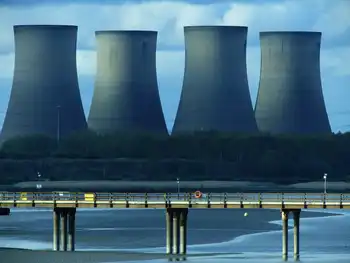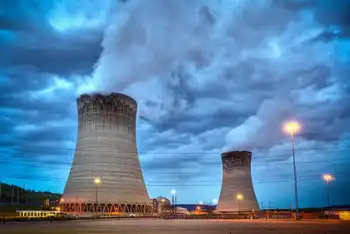Kenya increases geothermal capacity
NAIROBI, KENYA - The government of Kenya plans to develop 5,000 megawatts MW of geothermal power by 2030 in an effort to have a more diversified energy mix.
The government has outlined a $298 million plan to minimize the effects of the global economic crisis and of the longterm drought affecting the country. The capacity of the hydropower sector has been almost halved by the drought, and the sharply rising costs of dieselbased power generation costs have not helped matters.
Kiraitu Murungi, Kenyas energy minister, said that the country has the potential to generate 7,000 MW of geothermal power from the massive reserves of steam that lie under the Great Rift Valley stretching across the nation. Geothermal energy is generated by trapping the steam lying at great depths within the earths crust to power the electricitygenerating turbines.
The United Nations Environment Programme and the Global Environment Facility carried out a joint study of the area and concluded that at least 4,999 MW of electricity could be harnessed from the rift resources. All the utility companies of the country are now focusing their attention on geothermal power.
The countrys largest power generating company, stateowned Kenya Electricity Generating Company Limited KenGen, generates about 1,000 MW, meeting about 80 of the countrys demand. Of this, 700 MW is sourced from hydropower plants. Last year, the ongoing drought forced the company to close a 40MW hydropower plant, resulting in severe outages.
KenGen now plans to develop two geothermal power plants and is seeking $920 million in loans to implement the plan. The $1.3 billion plan will involve a capacity addition to the 45MW Olkaria 1 geothermal power plant and the development of the new 280MW Olkaria 4 geothermal plant. Olkaria 1 will also have an expanded capacity of 140 MW. The expansion will increase Kenyas installed geothermal power capacity by 85.
The country has already secured a $303 million loan from Japan for developing the geothermal power sector. The loan will enable KenGen to implement the Olkaria 1 expansion plan. The expansion project will include the addition of units 4 and 5, costing about $650 million. The welldrilling operation will cost a further $330 million. The government of Kenya has agreed to cover the drilling expenses.
In an effort to secure the rest of the funds, Kenya has initiated talks with global development banks such as the World Bank, the German development bank KfW Entwicklungsbank, the French Development Agency, and the European Investment Bank.
The 48MW Olkaria 3 geothermal project is located in Naivasha and was developed by Orpower 4 Incorporated, a wholly owned subsidiary of energy company Ormat Technologies Incorporated. The plant was developed in two phases. The second phase was brought online in January 2009. The electricity generated is being sold to power transmission and distribution company Kenya Power & Lighting Company Limited KPLC under a 20year power purchase agreement PPA. Olkaria 3 currently accounts for 6 of Kenyas total energy supply. In February this year, Orpower 4 signed a letter of intent with KPLC whereby the former will increase the capacity of Olkaria 3 by 52 MW within the framework of the existing PPA. The eightyear project will be implemented in two phases.
KenGen plans to increase its power generation capacity 500 MW by 2013 and 1,500 MW by 2018. The companys five priority projects are the Kipevu III thermal power plant, the Sangoro hydropower plant, the Mombasa thermal power plant, and redevelopment of the Tana and Kindaruma hydropower plants. In December 2009, KenGen formed a joint venture with Daewoo International Corporation under which a 600MW coalfired power plant will be built at Mombasa. The project is expected to be completed within five years of commencing the work. The Sangoro plant is being developed by Sinohydro Corporation. KenGen awarded the project to the Chinese company in 2008.
Related News

Ontario pitches support for electric bills
TORONTO - Applications for the CEAP program for Ontario residential consumers has opened. Residential customers across the province can now apply for funding through their local distribution company/utility.
On June 1st, our government announced a suite of initiatives to support Ontario’s electricity consumers, including a $9 million investment to support low-income Ontarians through the COVID-19 Energy Assistance Program (CEAP). CEAP will provide a one-time payment to Ontarians who are struggling to pay down overdue electricity bills incurred during the COVID-19 outbreak.
These initiatives include:
- $9 million for the COVID-19 Energy Assistance Program (CEAP) to support consumers struggling to pay their energy bills during…




